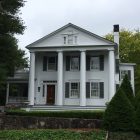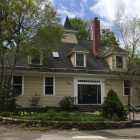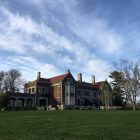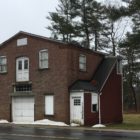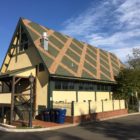Government
Owner of Historic Park Street Home Seeks Increased Flexibility in Home Office Use
|
The owner of a prominent Park Street house that’s lingered on the market for two years is seeking more flexibility from town officials than the New Canaan Zoning Regulations normally allow, regarding his home office. Richard Bergmann, an architect who since 1973 has owned the stately and well-preserved Greek revival at 63 Park St.—a house located in New Canaan’s Historic District that had been owned by Maxwell Perkins, masterful Scribners editor of Hemingway, Fitzgerald and Wolfe—on Monday night asked zoning officials for permission to allow the home’s owner to not live in the house while still using its first floor as an office. Specifically, he’s seeking a variance to a section of the zoning regulations (see page 47 here) that allows for a home-based business by permit so long as the person working there also uses the same dwelling as his or her primary residence, among other requirements. One of those requirements is that no more than one nonresident of the house can be employed on the premises—Bergmann in 1985 obtained a variance that allowed him to employ two people in addition to himself at the 1837-built Park Street home. In making his statement of hardship, which Bergmann reviewed before the Zoning Board of Appeals at its regular meeting Monday night, the homeowner noted that the house is adjacent to the town’s business district and that a similarly situated residence already has the allowances that he’s seeking.
